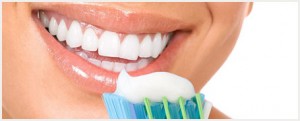Cavity Treatment and Prevention
Your mouth is saturated with a liquid called saliva. Saliva keeps your mouth clean by killing bacteria which exist in your mouth or is produced by the food you eat during the day. The foods you eat produce acid, specifically sugars and carbohydrates, which is the main cause of cavities (Dental Care | 7 Basic Things You Should Do Page). The acid will remain on your teeth if you don’t properly clean your mouth by brushing (Teeth Brushing Mastering Tips Page), flossing (Dental Flossing Mastering Instructions Page) and using mouthwash regularly can be a way as a cavity treatment and prevention (Cavity Treatment and Prevention Page). Gradually this lingering acid will produce bacteria and makes holes in your teeth which in turn causes decay (Understanding the Connection Between Sugar and Tooth Decay Page) and in some cases may create the need for tooth extracting (Extractions Page).
If you’ve suffered tooth decay, there are several treatments that can help you avoid losing your own natural teeth. Tooth filling (White Fillings | Dental Composite Fillings Page) is the most common solution for tooth decay. In this method your dentist drills your tooth and removes the decay spots, filling it with the bonding (Bonding Page) material. In the past there was only one silver colored type of filling that was used, but because of it’s unpleasing appearance, nowadays dentists use white fillings or adjusted filling materials that have the closest color to your natural teeth.
Can Any Problems Occur After Having A Filling?
While your dentist has taken every care to ensure your filling is the right size, sometimes you may realize that your bite feels high once the local anesthetic has worn off. If you feel like you are biting down on the filling first or if your bite feels uneven, return to your dentist to have the filling filed down to the right size. Not having your bite corrected can result in pain or breaking the filling.
 Cavity Treatment and Prevention Options
Cavity Treatment and Prevention Options
– There is some advice that can be consider as a cavity treatment and prevention. After you eat food the acids in your mouth attack your teeth for half an hour before they neutralize. Reducing the number of times you snack throughout the day lessens the amount of time your teeth are exposed to these harmful acids (Bad Breath Fight | Following Tips To Reduce The Bad Breath Page) and thus prevents tooth decay (Dental Care 101 – From Your Santa Monica Dentist Page) and can be a good cavity treatment and prevention. Foods containing carbohydrates or sugar are best avoided as snacks and should be limited to meals only. Fruit juices are very acidic and should be avoided; in fact, orange juice is almost as acidic as stomach acid.
– Where you live also depends on the quality of the water and if it contains fluoride or not. Using a toothpaste which contains fluoride is particularly important for people who don’t get the fluoride from the water they drink.
– Having enough saliva in your mouth is important in helping prevent tooth decay and play a role as a cavity treatment and prevention. Dry mouth (xerostomia), can commonly cause decay, so it is important to treat xerostomia if you suffer from this.
– Children who have recently grown new molars are able to get fissure (pits) seals to protect their teeth. As the bristles of a toothbrush are not always able to get into the fissures to clean them, decay can occur. A fissure seal is a protective coating which is placed in the fissures on the biting surface of their teeth to prevent cavities and acts like cavity treatment and prevention. It is a simple, pain-free procedure which does not harm the teeth in any way.
– Of course the best way to cavity treatment and prevention is by brushing your teeth every morning and night and flossing once per day. Visiting your dentist (Visit Your Dentist Regularly, and Not Just for Cleanings Page) every 6 months is important to get your teeth cleaned and to check if you have developed any cavities. A dentist will take x-rays (Dental X-Rays Page) every year to look for decay underneath fillings and between the teeth that can’t be seen with a visual examination.





